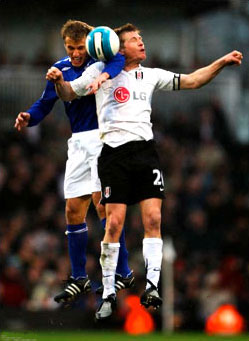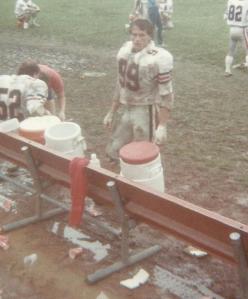 The information being brought to The Concussion Blog has been astounding, newsworthy, controversial (to some) and welcome. We are not paying anyone for their guest posts, rather providing a platform for the information. The inbox is always open for such things – with me as executive editor. Just because something is posted here does not mean that I or we generally agree or endorse unless otherwise stated. I have reached out to many people on the other side of this current CFL issue to open my pages to them and have yet to get a post from them. Honestly, I don’t know that much about the CFL and its players – Doug Flutie being the only one I remember that well. I truly appreciate the feedback on this continuing saga, but remember this is one journalist, Terry Ott’s, work. It is here because he cannot find anyone to publish his information in Canada. I feel this information is important to share. What follows is Terry’s most recent filing.
The information being brought to The Concussion Blog has been astounding, newsworthy, controversial (to some) and welcome. We are not paying anyone for their guest posts, rather providing a platform for the information. The inbox is always open for such things – with me as executive editor. Just because something is posted here does not mean that I or we generally agree or endorse unless otherwise stated. I have reached out to many people on the other side of this current CFL issue to open my pages to them and have yet to get a post from them. Honestly, I don’t know that much about the CFL and its players – Doug Flutie being the only one I remember that well. I truly appreciate the feedback on this continuing saga, but remember this is one journalist, Terry Ott’s, work. It is here because he cannot find anyone to publish his information in Canada. I feel this information is important to share. What follows is Terry’s most recent filing.
==========
1970s ERA CFL STAR ERIC “The Flea” ALLEN WILL REPORTEDLY SUE CFL FOR ALLEGED MANY HEALTH PROBLEMS AS A RESULT OF PLAY
Former Toronto Argonaut Player Dealing With “Serious” And Debilitating Concussion Related Issues
Hamilton, Ontario — July 30, 2104
Eric “The Flea” Allen starred with the Toronto Argonauts between 1973-1975, and as noted previously here in Sneer and Loafing, is suffering the effects of what is alleged to be serious brain damage caused by multiple concussions while he was playing for the Toronto team, which at the time, was the highest profile and richest franchise in the league.
Allen, 65, is currently being cared for by his elderly mother in the family home in Rock Hill, South Carolina, along with some help from family and home care workers.
In an interview, Allen’s mother Rebecca Young, 84, said that Eric’s condition had declined precipitously in the last 6 weeks to the point that her son “can hardly walk now,” even with the aid of a walker, and spends most of the day in bed suffering from vertigo and has recently developed bouts of incontinence as well as suffering from worsening memory and mood issues.
Mrs. Young said that she had recently been visited by Canadian lawyer Robyn Wishart who Mrs. Young said will be representing Mr. Allen in a legal action against the Canadian Football League, allegedly for concussion injuries Allen says he suffered while playing in the league for the Toronto Argos for the three seasons in question.
“She said she was going to do her best to get (us) some help,” said Mrs.Young, of lawyer Wishart. “I hope it’s soon…I’m so tired,” added Mrs. Young, who as the principal caregiver for her debilitated son has a multiple hour drive to take Mr. Allen for treatment at the Medical University of South Carolina.
Ms. Wishart was traveling and did not return telephone calls for comment about Allen’s condition.
Two weeks ago, Arland Bruce, also represented by attorney Wishart, was the first 21st century former CFL player to file suit against the CFL member teams and others for concussion injury. Mr. Allen now marks the first from another era to follow a similar path although legal sources expect any lawsuit alleging head injury prior to any officially established CFL concussion protocols to be constructed quite differently than the Bruce pleadings, possibly along the lines of the now settled NFLPA 1 billion dollar suit against the NFL.
Furthermore, according to a source speaking on condition of anonymity, there are now at least a total of 7 former CFL players, some who played over 50 years ago, currently, or intending to, bring suit against the league for concussion injury.
The Arland Bruce III lawsuit story was national news in Canada for several days after it first broke on this Blog July 16, albeit with some of the coverage taking on a near inquisition tone regarding Mr. Bruce’s motivations and alleged recent actions.
And unfortunately, your correspondent has been hearing about rumblings/grumblings supposedly originating from within The Great White North sports media community that somehow I have embellished, made up, or even peddled “lies” in my episodic and breaking reporting of the emerging concussion crisis in the CFL during the last 9 months.
In case you still don’t get it boys: this is not about me, but rather the wounded former players and common human decency. The players are making nothing up. Mull that scenario over for a while my suspicious, duplicitous friends.
This latest report on Mr. Allen’s troubles and intentions will hopefully give those uninformed and wrong side of history naysayers some pause before they raise questions about Mr. Allen and his family’s motivations and needs, as well as way, way down the line, mine.
 Twitter is such a wonderful thing! You can get so much information is such a short time; sure there is a ton of unsolicited information that one may have to weed through, but the benefits outweigh the bad – at least for us here at The Concussion Blog.
Twitter is such a wonderful thing! You can get so much information is such a short time; sure there is a ton of unsolicited information that one may have to weed through, but the benefits outweigh the bad – at least for us here at The Concussion Blog. In July this blog
In July this blog  Although the news of a concussion lawsuit is not really “new” anymore the fact that it was brought against FIFA was “earth-shattering” in terms of news. Sure, the football leagues and even the NCAA have been targets, but for soccer to get the proverbial target painted on its back has really shook up the sporting world. It was big enough news that it was in national sports casts and even was termed “breaking news” in corners of the world.
Although the news of a concussion lawsuit is not really “new” anymore the fact that it was brought against FIFA was “earth-shattering” in terms of news. Sure, the football leagues and even the NCAA have been targets, but for soccer to get the proverbial target painted on its back has really shook up the sporting world. It was big enough news that it was in national sports casts and even was termed “breaking news” in corners of the world.
 Originally titled
Originally titled  Terry Ott files a follow-up regarding the law suit in Canada and Arland Bruce. This is his commentary on the coverage of the issue; all information, illustrations, pictures and links are his.
Terry Ott files a follow-up regarding the law suit in Canada and Arland Bruce. This is his commentary on the coverage of the issue; all information, illustrations, pictures and links are his. Terry Ott has filed this BREAKING NEWS in regards to Canadian Football and the Concussion Issue. We here at The Concussion Blog are pleased to bring this information to you… You can find the
Terry Ott has filed this BREAKING NEWS in regards to Canadian Football and the Concussion Issue. We here at The Concussion Blog are pleased to bring this information to you… You can find the  Coming to a bookstore and TV near you today is “League of Denial” a book and documentary about one of the dirty little secrets the NFL has been avoiding for some time. Fortunately, I have been provided with advance copies of both; the
Coming to a bookstore and TV near you today is “League of Denial” a book and documentary about one of the dirty little secrets the NFL has been avoiding for some time. Fortunately, I have been provided with advance copies of both; the  Coming to a bookstore and TV near you tomorrow is “League of Denial” a book and documentary about one of the dirty little secrets the NFL has been avoiding for some time. Fortunately, I have been provided with advance copies of both; the
Coming to a bookstore and TV near you tomorrow is “League of Denial” a book and documentary about one of the dirty little secrets the NFL has been avoiding for some time. Fortunately, I have been provided with advance copies of both; the  NOCASE sent me the most recent press release; pertaining to the aftermarket/third-party additions to helmets. Here it is in full;
NOCASE sent me the most recent press release; pertaining to the aftermarket/third-party additions to helmets. Here it is in full; I really don’t have much for this quote found in
I really don’t have much for this quote found in  On the surface this article may be innocuous to many, but the the minutia of concussion research and information is coming to a head very quickly, especially pertaining to the NFL. Tomorrow is the first hearings in front of the judge – and the possibility of total dismissal – for the concussion law suits filed by thousands of former NFL players.
On the surface this article may be innocuous to many, but the the minutia of concussion research and information is coming to a head very quickly, especially pertaining to the NFL. Tomorrow is the first hearings in front of the judge – and the possibility of total dismissal – for the concussion law suits filed by thousands of former NFL players. If you all recall I went to Zurich in November to attend the “Concussion Conference”; mainly as an observer, but there was enough time and opportunity to impart my questions/knowledge as a practicing athletic trainer. Here are the links to
If you all recall I went to Zurich in November to attend the “Concussion Conference”; mainly as an observer, but there was enough time and opportunity to impart my questions/knowledge as a practicing athletic trainer. Here are the links to  The concussion issue has permeated every facet of life and sport. Now policies, products, rules and law are starting to address the issue head on (pun intended), and one of the
The concussion issue has permeated every facet of life and sport. Now policies, products, rules and law are starting to address the issue head on (pun intended), and one of the 

